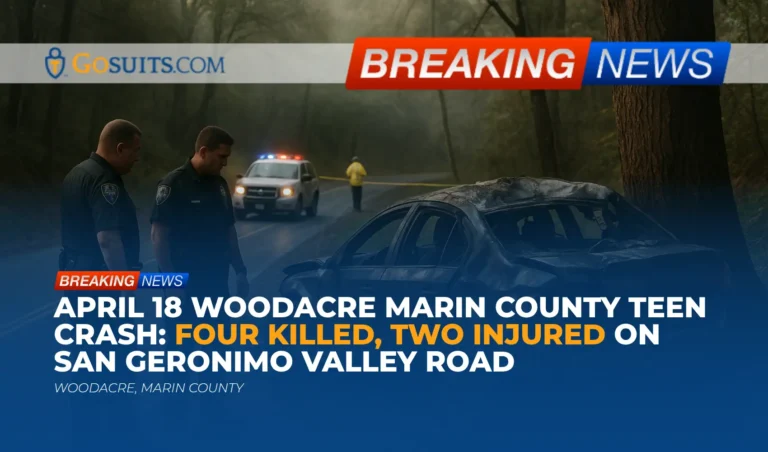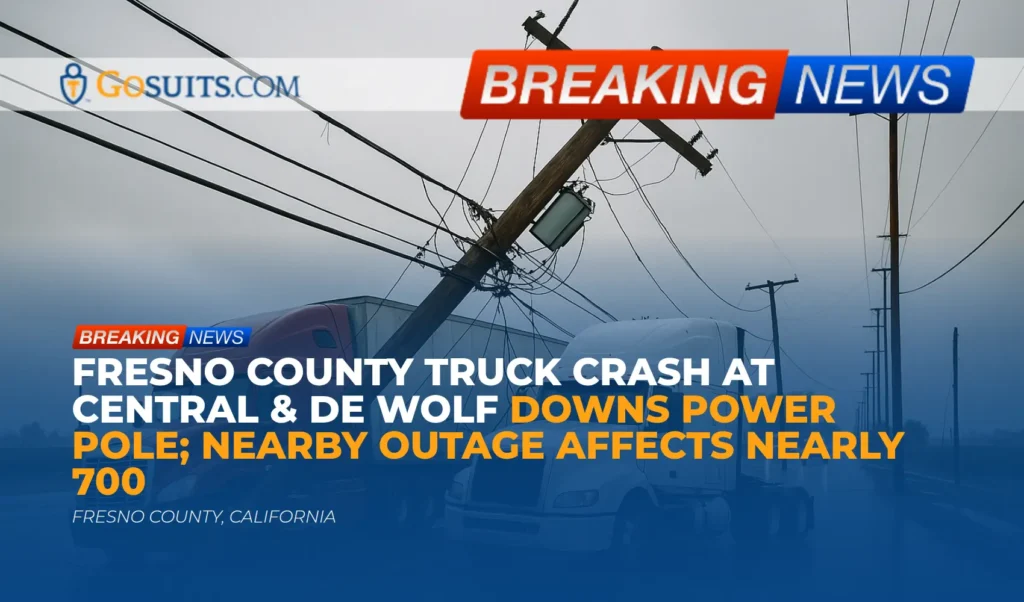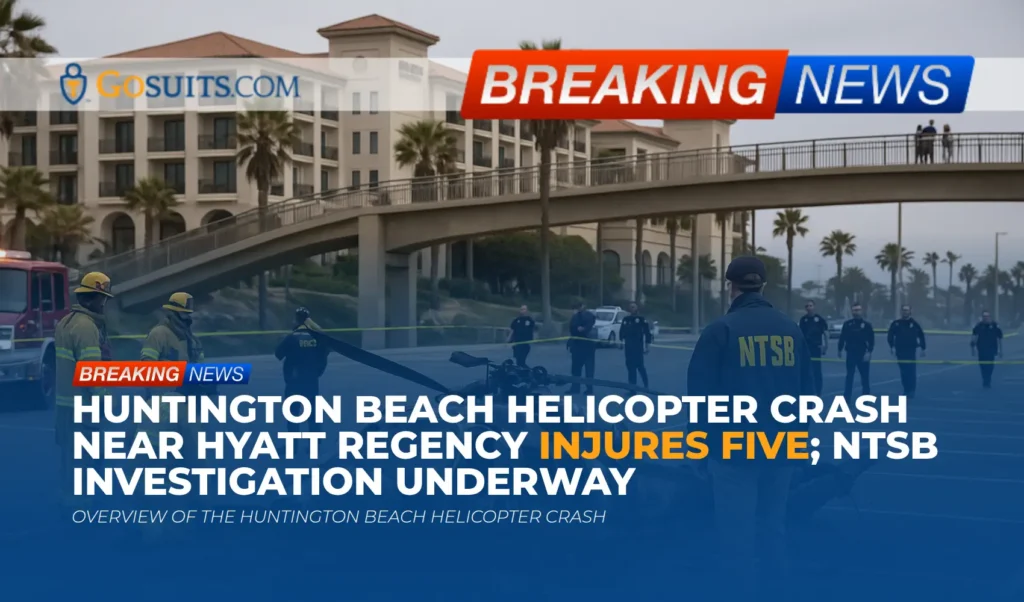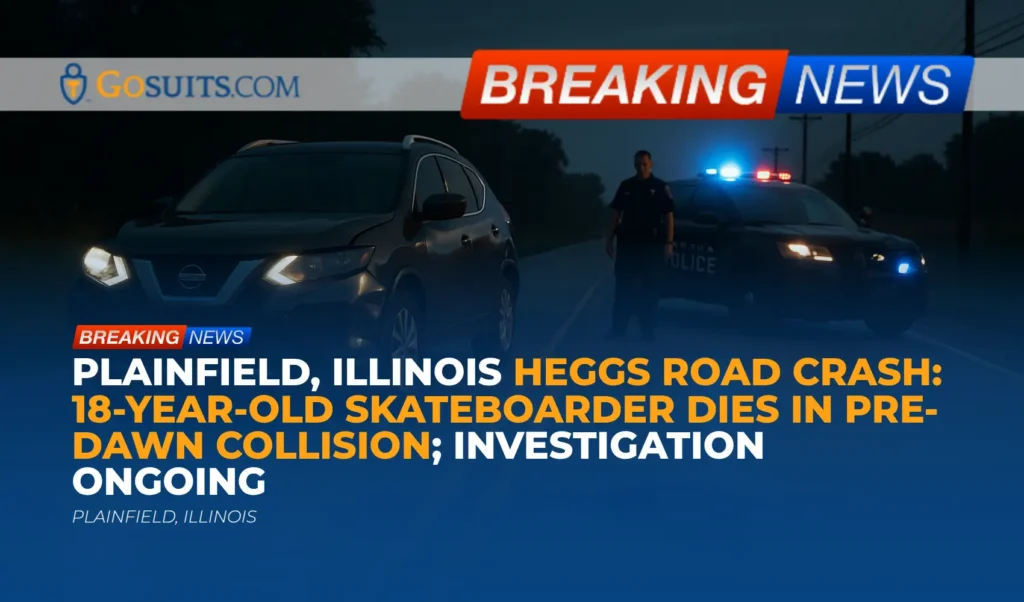- What is known about the April 18 Marin County crash
- Where and when it happened
- What investigators have reported to date
- Conflicting accounts and key evidence gaps
- Legal rights of injured survivors and bereaved families in California
- Potential civil liability and how it could be allocated
- Insurance issues that can shape recovery
- What records to request now and who to contact
- Preserving evidence and documenting losses
- Deadlines that can affect civil claims in California
- Safety context: Teen driving, rural roads, and speed
- How community members can support families with care and privacy
- Commentary from Gosuits Woodacre, California Personal Injury Attorney
- Next steps and why timing matters
What is known about the April 18 Marin County crash
On April 18, a devastating single-vehicle crash in rural Marin County resulted in the deaths of four teenagers who attended Archie Williams High School in San Anselmo. Two teens survived, including the 16-year-old driver. The crash reportedly occurred on San Geronimo Valley Road in the Woodacre area and involved a vehicle that left the roadway and struck a tree, with the vehicle catching fire on impact. Alcohol and drugs were not identified as factors. This tragedy profoundly affected the communities of Fairfax, Woodacre, and the broader San Geronimo Valley.
Accounts from surviving occupants and the California Highway Patrol (CHP) diverge. A surviving passenger described an oncoming vehicle with bright headlights veering into their lane shortly before the crash, while the CHP investigation emphasized speed and roadway conditions as primary contributing factors. The event data recorder (often called the “black box”) was not recovered due to the severity of the fire.
Where and when it happened
The collision happened on the evening of April 18 along San Geronimo Valley Road, a narrow, curving rural roadway bordered by trees and limited shoulders in the Woodacre area of unincorporated Marin County. The posted speed in the area relevant to the investigation is reported to be 40 miles per hour.
What investigators have reported to date
According to information attributed to the California Highway Patrol’s investigative findings, officers concluded that the 16-year-old driver was traveling approximately 60 to 65 miles per hour in a 40 mph zone prior to impact. The CHP cited roadway features, including limited sight distance, narrow lanes, small shoulders, and dense forest along both sides, as factors that increased risk at higher speeds. Investigators also noted that the driver had held a provisional license for about five months, which may indicate limited experience managing demanding rural road conditions at higher speeds.
A significant piece of physical evidence referenced in news reporting is a photograph of the vehicle’s damaged instrument cluster, with the speedometer needle positioned near 60–65 mph. Investigators reportedly opined that the sudden loss of power at impact could have frozen the needle, reflecting a minimum speed at collision. Because the event data recorder (EDR) was destroyed, there is no downloadable pre-crash data to corroborate speed, braking, or steering inputs. Statements also indicate that alcohol and drugs were ruled out as contributing factors.
While criminal charging decisions were referenced in reporting, those determinations are separate from the civil questions families often ask about accountability, insurance, and compensation pathways. The focus here is on civil law issues that arise after a catastrophic crash, regardless of any criminal case decisions.
Conflicting accounts and key evidence gaps
One survivor reported seeing bright headlights from a vehicle encroaching into their lane, which could suggest an evasive reaction by the teen driver. However, without EDR data or independent corroboration, determining speed changes, steering inputs, or whether a second vehicle physically contacted or directly influenced the trajectory is more challenging. Although instrument clusters can sometimes offer clues, EDR data usually provides more reliable measurements of speed, throttle, braking, and steering in the seconds before impact. The lack of an EDR here leaves an important evidence gap that makes reconstruction more dependent on scene analysis, witness statements, and physical evidence.
In collisions where a potential “phantom vehicle” is alleged, the availability of third-party witnesses, surveillance from nearby properties, and any physical trace evidence (debris transfers, tire marks, or paint) can be critical. Absent such evidence, reconstruction often relies on roadway markings, vehicle crush analysis, and physics-based methods to estimate pre-impact speeds and maneuvers.
Legal rights of injured survivors and bereaved families in California
Families grieving a wrongful death and survivors coping with serious injuries frequently ask what civil claims may be available. In California, the following are general pathways:
- Wrongful death claims: Certain family members may bring claims for losses stemming from a loved one’s death, including loss of financial support and companionship. See California Code of Civil Procedure sections on wrongful death claimants and procedures (e.g., CCP 377.60).
- Survival actions: The decedent’s estate may pursue claims the decedent could have brought had they survived, for certain damages incurred before death. See CCP 377.30.
- Injury claims by survivors: Injured passengers may bring negligence claims against at-fault parties, which can include the driver of their own vehicle, another driver, or entities responsible for dangerous roadway conditions if legally applicable.
Every case turns on specific facts, insurance coverage, and the evidence available. The discussion below is general information, not a case evaluation.
Potential civil liability and how it could be allocated
Under California law, liability in a crash can be shared among multiple parties. Key avenues that may be considered in a case like this include:
- Driver negligence: California’s basic speed law prohibits driving faster than is reasonable or prudent given weather, visibility, traffic, and roadway conditions, even if the posted limit is not exceeded. See Vehicle Code 22350. If evidence supports that speed and an unsafe turn caused the crash, negligence claims may focus on those violations. Comparative negligence may also be assessed among all involved parties if evidence suggests more than one contributing cause.
- Owner liability for permissive use: When a vehicle owner allows another person to drive, the owner can be vicariously liable for the driver’s negligence, subject to statutory caps on that vicarious liability. See Vehicle Code 17150 and damages limits at Vehicle Code 17151.
- Parent or guardian liability for a minor driver: The adult who signed a minor’s license application can be jointly liable for the minor’s negligence, with statutory limits similar to those in permissive-use owner liability. See Vehicle Code 17707 and limitations in Vehicle Code 17709. Separate theories like negligent entrustment, if proven, are not subject to those vicarious liability caps, but they require fact-specific proof and are not presumed.
- Violation of provisional license restrictions: California’s provisional licensing rules limit passengers under 20 during the first 12 months unless certain exceptions apply. See Vehicle Code 12814.6. A licensing violation does not automatically establish civil liability, but it can be a factor considered in negligence analysis.
- Potential roadway condition claims: If a dangerous condition of public property substantially contributed to the crash, a government entity could face claims under Government Code 835. Roadway features alleged here include limited sight distance, narrow lanes, and trees close to the travel way. Such claims require timely government claims submissions, expert analysis, and proof that the condition created a reasonably foreseeable risk and that the entity had notice and a reasonable opportunity to address it.
- Other driver involvement: If evidence were to substantiate that another vehicle encroached into the lane or made unsafe movements causing evasive action, that driver’s negligence could be implicated. Establishing the identity of that vehicle and driver is often critical for insurance recovery.
Insurance issues that can shape recovery
Insurance coverage will shape what compensation may be available, regardless of fault disputes. Key issues include:
- Liability coverage: Claims may be presented under the at-fault driver’s auto liability policy. If the driver is a minor, coverage typically follows the vehicle owner and named insureds, subject to policy terms and exclusions.
- Owner and household coverage: When a vehicle owner and a minor driver are in the same household, multiple policies could be involved. Coverage analysis should carefully review all potentially applicable policies.
- Uninsured/Underinsured Motorist (UM/UIM): If a phantom or hit-and-run vehicle contributed but cannot be identified, California’s uninsured motorist law generally requires physical contact with the unknown vehicle for UM benefits to apply, among other conditions, including prompt reporting to police and insurer. See Insurance Code 11580.2. The physical-contact requirement is a frequent hurdle in alleged “no-contact” phantom-vehicle scenarios. Policy language varies, so a careful review is necessary.
- Medical payments (MedPay): Some auto policies include no-fault medical payments coverage that can help with immediate medical expenses for passengers, subject to limits and coordination with health insurance.
- Vehicle data and EDR: NHTSA explains that event data recorders capture pre-crash vehicle metrics like speed and braking, if present and recoverable. See NHTSA’s EDR overview. Because the EDR in this crash was destroyed, insurers and investigators must rely on alternative evidence such as scene measurements and witness statements.
Before any contact with an insurance company, it is prudent to consult an attorney for a free consultation to understand rights and risks. Statements to insurers can be recorded and used to limit or challenge claims later.
What records to request now and who to contact
Early documentation helps families and survivors understand what happened and supports any civil claims. The following records are often important:
- CHP collision report: Request a copy of the official report. Eligible parties (involved persons, their representatives, and certain family members of decedents) can request reports from the CHP Area Office handling the crash. See the CHP’s request process and office locator: CHP: Request a Collision Report and CHP: Find an Office.
- Supplemental reports and diagrams: Ask whether photographs, scene measurements, or supplemental narratives exist and how to request them. Larger collisions sometimes involve specialized teams; ask the Area Office if any specialized reconstruction report was prepared.
- Coroner’s records: Autopsy and coroner investigative reports are typically maintained by the county sheriff-coroner. Next of kin may request authorized records. Procedures can vary by county. California law authorizes coroner investigations into sudden or unexpected deaths; see Gov. Code 27491. Autopsy photographs are restricted; see CCP 129. For Marin County, contact the Sheriff-Coroner’s Office directly by phone to confirm request steps, identification requirements, and any fees.
- Death certificates: Certified copies are issued by the state or county vital records offices. See the California Department of Public Health’s vital records page: CDPH: Vital Records.
- Medical and ambulance records: Hospitals and EMS providers maintain treatment records. Requests typically require HIPAA-compliant authorizations from the patient or legal representative.
- Fire and rescue reports: If local fire services responded, incident reports may describe extrication, fire behavior, and timelines. Procedures vary by agency; the CHP report often lists responding agencies and incident numbers to help locate these records.
- Victim support resources: California’s Victim Compensation Board may assist eligible victims and families with certain out-of-pocket costs. See CalVCB.
Preserving evidence and documenting losses
After a severe crash, evidence can be lost quickly. Helpful steps include:
- Written preservation requests: Send written requests to involved insurers and entities to preserve any remaining vehicle evidence, photographs, and scene data. While California does not recognize a separate tort claim for third-party spoliation, courts may impose sanctions or evidentiary remedies if litigation is underway and evidence is destroyed.
- Photograph and catalog: Save photos and videos of the crash scene, vehicle condition (if accessible), skid or yaw marks, and road features. Note dates, times, and locations.
- Witness information: Gather names, contact information, and recorded statements from anyone with firsthand observations.
- Expense records: Keep receipts and records of medical bills, therapy, travel to appointments, funeral costs, and any other out-of-pocket losses. These support damages documentation.
Because insurers often request recorded statements early, consider consulting an attorney first. Statements made without context can later be used to dispute liability or minimize damages.

Deadlines that can affect civil claims in California
Time limits are strict and missing them can bar claims:
- Wrongful death and personal injury: Generally two years from the date of death or injury to file suit. See CCP 335.1.
- Claims against government entities: Written claims must generally be presented within six months of the incident for claims related to injury or death, before a lawsuit may be filed. See Gov. Code 911.2, with limited provisions for late claims at Gov. Code 911.4.
- Uninsured motorist claims: Policies often require prompt notice to the insurer and police, and California’s UM statute imposes conditions for hit-and-run claims, including the physical contact requirement. See Ins. Code 11580.2.
These timelines can be shorter in special circumstances. Consulting with counsel early can help protect important rights while families prioritize care and grieving.
Safety context: Teen driving, rural roads, and speed
Officials cited high speed combined with rural roadway characteristics as an associated factor. National and state safety data help explain why these factors are so dangerous:
- Speed and severity: Federal safety guidance underscores that higher speeds increase both crash likelihood and injury severity. See U.S. DOT’s speed safety work for context: U.S. DOT Speed Management.
- Rural roadway risks: Narrow lanes, limited shoulders, and roadside trees reduce recovery space and sight distance, leaving little margin for error. See FHWA guidance on clear zones and safe roadsides at FHWA: Clear Zone.
- Teen drivers and passengers: The CDC notes teens have higher crash risks, and teen passengers can increase distraction and risk-taking. See CDC: Teen Drivers.
- Event data interpretation: NHTSA explains what EDRs record and how they aid crash analysis, emphasizing their role in reconstructing pre-crash behavior when available. See NHTSA: Event Data Recorders.
California’s basic speed law, which requires speed to be reasonable for conditions, reflects this safety science. See Vehicle Code 22350.
How community members can support families with care and privacy
In the wake of a loss like this, families often need space and time. Many communities offer vigils, memorial funds, meal trains, and school-based counseling. While public interest is understandable, sharing unverified theories or images can compound trauma. Where possible, route offers of help through trusted community organizers or school counselors, and respect the families’ stated preferences about privacy.
Commentary from Gosuits Woodacre, California Personal Injury Attorney
Our hearts are with everyone affected by the April 18 crash. Four young lives were lost, and two more teens must heal from profound physical and emotional injuries. This overview is offered for general information and education about civil law issues that commonly arise after catastrophic collisions.
Based on the publicly described facts, investigators have focused on speed and challenging roadway features, while a survivor described oncoming headlights. The loss of the vehicle’s event data recorder leaves a gap that can matter in civil fault analysis. In circumstances like these, a careful reconstruction using scene evidence, photographs, medical timelines, and witness statements becomes especially important. Where a potential second vehicle is alleged, independent corroboration or physical contact often determines whether certain insurance coverages apply.
Insurers and large corporate entities are trained to move quickly after severe crashes. Adjusters may ask for detailed statements before all facts are known, and recorded answers can later be used to dispute fault or minimize losses. Complex provisions—like uninsured motorist conditions in no-contact hit-and-run scenarios, or vicarious liability limits—can be confusing and may be cited to narrow coverage. Taking time to understand applicable laws and policy terms can help level the playing field.
A free consultation with a seasoned personal injury lawyer can provide clarity about rights, potential sources of recovery, and deadlines. It also helps ensure that communications with insurers do not unintentionally harm claims. No two cases are alike, and sensitive, informed guidance can reduce the burden on families during an already overwhelming time.
Next steps and why timing matters
What to do
- Obtain official records: Request the CHP collision report and any supplemental documents; ask about photos and scene diagrams. Contact the county Sheriff-Coroner about available reports for authorized next of kin. Request medical and EMS records and maintain an organized file.
- Preserve evidence: Send written preservation requests to relevant insurers and any custodians of evidence. Keep all physical items and documents. Photograph the scene and any vehicle evidence if accessible and safe.
- Be cautious with insurers: Before giving any recorded statement, consult a lawyer for a free consultation to understand the implications. What is said early can be used to dispute claims later.
- Track expenses and impacts: Maintain records of medical care, counseling, funeral costs, school impacts, and lost income or support. Consistent documentation helps establish damages.
- Calendar deadlines: Note the two-year general civil statute and the six-month government claim requirement if roadway-condition issues might be pursued. Do not wait until the last month; evidence and witnesses are best secured early.
Why act now
- Evidence fades: Skid marks wear away, vegetation changes, and memories become less reliable. Prompt action preserves quality evidence for engineers and investigators.
- Insurance timelines: Policies require timely notice, and uninsured motorist claims often carry strict reporting requirements to police and insurers. Early steps protect eligibility.
- Government claims window: Potential roadway-condition claims require a government claim within six months in most injury or death cases. Missing that window can bar those avenues entirely.
- Care and support: Rapidly organizing medical follow-up and counseling for survivors and grieving families can improve outcomes and create clearer records of need.
Where to start
- CHP Area Office: Use the CHP’s locator to identify the office handling the collision and request the report: Find an Office. Review the collision report request guidance at Request a Collision Report.
- Vital records: Request certified death certificates through the California Department of Public Health: CDPH: Vital Records.
- Victim support: Review potential assistance available through the California Victim Compensation Board at CalVCB.

Context for decision-making
- Complex liability: Cases involving teen drivers, possible phantom vehicles, and challenging rural roads require nuanced analysis. Early consultation can help identify all potential sources of coverage and responsibility.
- Protecting statements: Insurance companies may guide conversations in ways that limit recovery. Learning what to say and what not to say can prevent avoidable setbacks.
- Long-term needs: Serious injuries and grief often involve extended care, counseling, and education impacts. Documenting these needs from the start builds a clearer picture if a civil claim proceeds.
References to official sources
- California Vehicle Code 22350 (Basic Speed Law)
- California Vehicle Code 12814.6 (Provisional Licenses)
- California Vehicle Code 17150 (Owner Liability) and 17151 (Limits)
- California Vehicle Code 17707 (Liability of Person Signing Minor’s License) and 17709 (Limits)
- CCP 377.60 (Wrongful Death) and CCP 377.30 (Survival Actions)
- CCP 335.1 (Two-Year Statute for Injury/Death)
- Government Code 835 (Dangerous Condition of Public Property), 911.2 (Six-Month Claim Deadline), and 911.4 (Late Claims)
- Insurance Code 11580.2 (Uninsured Motorist, Hit-and-Run Conditions)
- Government Code 27491 (Coroner Duties) and CCP 129 (Restrictions on Disclosure of Autopsy Images)
- CHP: Request a Collision Report and CHP: Find an Office
- California Department of Public Health: Vital Records
- California Victim Compensation Board (CalVCB)
- CDC: Teen Drivers
- FHWA: Clear Zone and Roadsides
- U.S. DOT: Speed Management
- NHTSA: Event Data Recorder Overview






